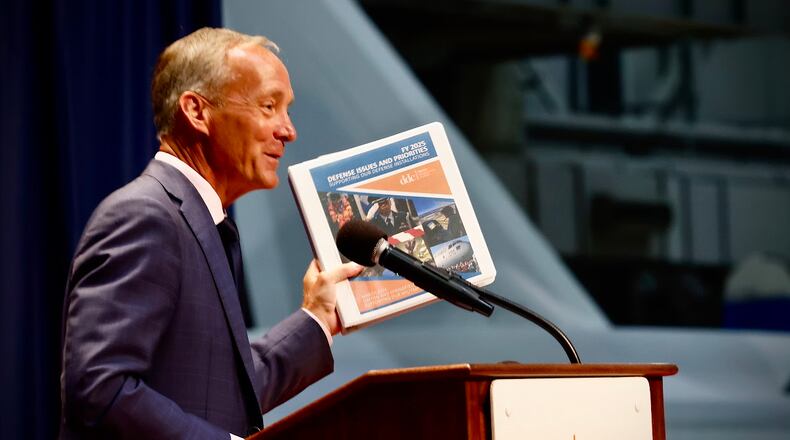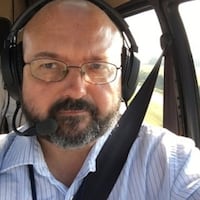Monday’s gathering was a time to celebrate the milestone of 38,000 military and civilian personnel working “inside the fence” at the large Air Force base, essentially adding to the base a number of new workers roughly equivalent to a city the size of Miamisburg since 2002.
In more than a century of existence, the base has grown steadily but slowly. In 2002, Wright-Patterson was home to 19,000 employees. Even then, it was the largest single-site employer anywhere in Ohio.
Today, as the Air Force reorganizes for competition with China, Russia and others, it boasts a working population of 38,000 people, higher than ever before.
“This is something we’ve done together,” said U.S. Rep. Mike Turner, R-Dayton, who first joined Congress after the election in 2002, armed with a plan drafted by leaders of the Dayton Development Coalition and others: Get on the House Armed Services Committee and protect the base.
Turner joined that committee and in 2015, the House Permanent Select Committee on Intelligence, a committee he now chairs. On both committees, he has advocated for the base, urging the Air Force to direct missions to Wright-Patt when that made sense.
In the past 22 years, the base emerged from the 2005 BRAC (Base Realignment and Closure process) with a new wing, the 711th Human Performance Wing, a steadily growing National Air and Space Intelligence Center (NASIC), and in 2022, the National Space Intelligence Center (NSIC). Today, besides the Air Force, elements of the Navy and the Space Force are comfortably at work on the base.
The base is home to global units responsible for equipping and sustaining the Air Force and its personnel, the Air Force Materiel Command, the Air Force Life Cycle Management Center, the Air Force Research Laboratory, among others.
“We know it started with the Wright brothers, and it came down to people who got up every day to change the world,” Turner said.
And while the prospect of a new BRAC is not a “lost concept,” Turner said, Air Force leaders are focused today on great power competition, moving away from the War on Terror.
“We look forward to Wright-Patterson’s contribution to our national defense during this time of consequence,” said Lt. Gen. Donna Shipton, commander of the Life Cycle Management Center.
J.P. Nauseef, CEO of JobsOhio, came to the Dayton area in the late 1970s as the son of an Air Force officer, Brig. Gen. John Nauseef (retired). After serving in the Air Force himself, Nauseef decided to retire in the Dayton area. The key to the region’s success wasn’t hard to discern, he said.
“If you show people what is happening here at Wright-Patterson Air Force Base, the great people, how much they accomplish, the missions, then more and more work would come here,” Nauseef said.
About the Author


